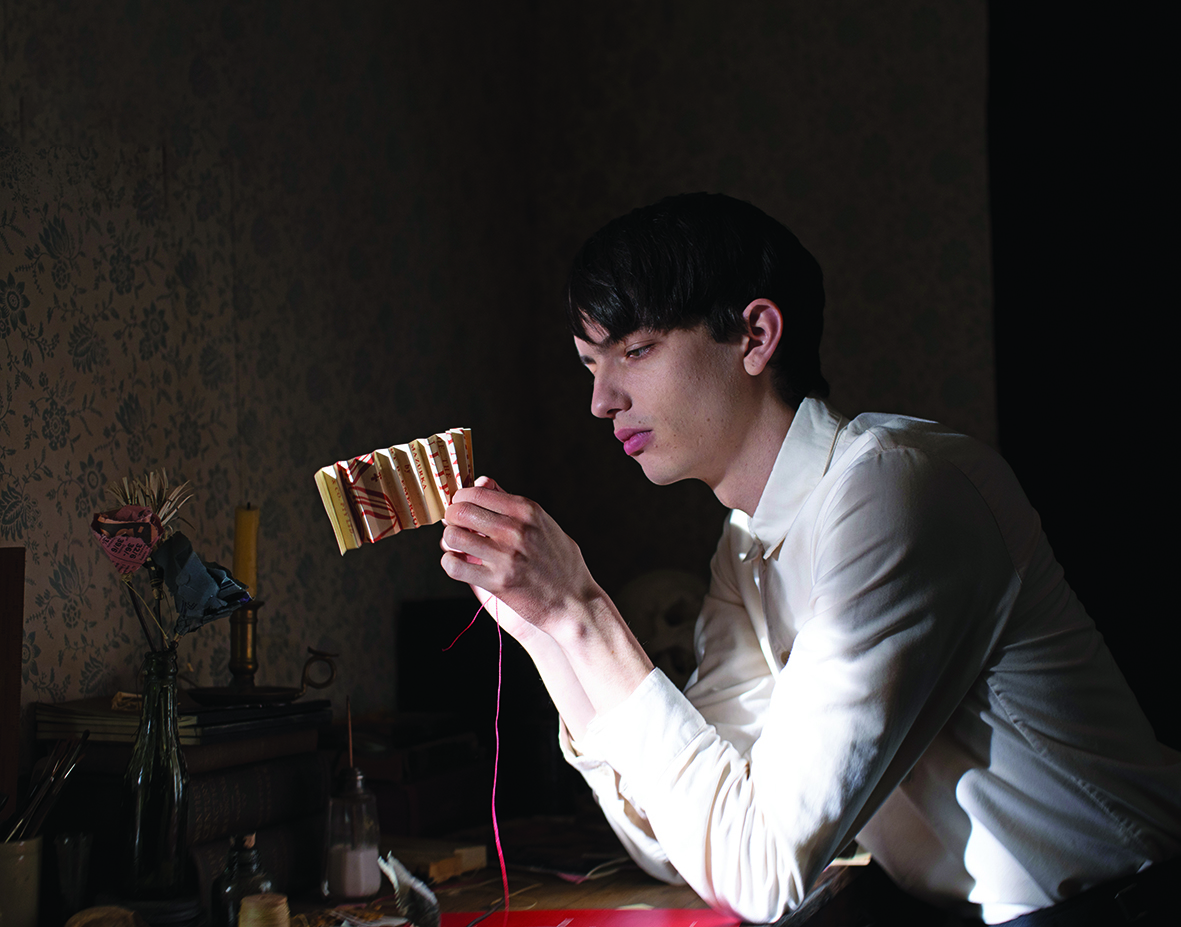Jane Campion’s bracing, Silver Lion[1]The Silver Lion is the prize given for Best Director at the Venice International Film Festival, where The Power of the Dog premiered in September 2021.–winning feature The Power of the Dog (2021) – her long-awaited return to the big screen after a twelve-year hiatus – opens with a question: ‘What kind of man would I be if I did not help my mother? If I did not save her?’ Phrased rhetorically, this seemingly whimsical line of inquiry alludes to every one of the film’s main concerns: masculinity, taxonomy, salvation, filial reverence, negation. Moreover, uttered in disembodied, voice-of-god form by teenager Peter Gordon (Kodi Smit-McPhee), it signals to us that the story’s allegiance falls squarely on his side of the yet-to-be-disclosed conflict. When we finally glimpse the body from which our preambular voice has emanated, it’s almost underwhelming: Peter is gangly and awkward, quietly spoken, constantly curled in on himself as if scared to expose an internal softness. The sentiment is only heightened by our having met, in the previous frames, the imposing Phil Burbank (Benedict Cumberbatch), a bulwark of a man with a baritone and the physique of an archetypal cowboy, and whom we later see castrating bulls by hand and commanding his lackeys with both charm and intimidation. So we’re presented again with the question, this time wordlessly and with the first-person pronoun projected outwards: what kind of man would we be?
The Power of the Dog has been hailed as ‘a triumphant return’,[2]Bilge Ebiri, ‘Jane Campion Makes a Triumphant Return to the Big Screen with The Power of the Dog’, Vulture, 2 September 2021, <https://www.vulture.com/article/movie-review-netflixs-power-of-the-dog-from-jane-campion.html>, accessed 4 November 2021. ‘a riveting must-watch’,[3]Mae Abdulbaki, ‘Middleburg Review: Jane Campion’s The Power of the Dog Is a Riveting Must-watch’, Screen Rant, 19 October 2021, <https://screenrant.com/the-power-of-the-dog-2021-movie-reviews/>, accessed 4 November 2021.3 ‘quietly ferocious’,[4]Chris Barsanti, ‘Review: The Power of the Dog Is a Quietly Ferocious Portrait of Weaponized Masculinity’, Slant, 21 September 2021, <https://www.slantmagazine.com/film/the-power-of-the-dog-review-jane-campion/>, accessed 4 November 2021. ‘impeccably crafted’[5]Owen Gleiberman, ‘The Power of the Dog Review: Jane Campion’s Psychodramatic Western Is Impeccably Crafted but Lacks the Major Voices of The Piano’, Variety, 2 September 2021, <https://variety.com/2021/film/reviews/the-power-of-the-dog-review-jane-campion-benedict-cumberbatch-kirsten-dunst-jesse-plemons-1235054229/>, accessed 4 November 2021. and ‘masterful’,[6]Tom Bond, ‘The Power of the Dog – Venice 2021 Review’, One Room with a View, 2 September 2021, <https://oneroomwithaview.com/2021/09/02/the-power-of-the-dog-venice-2021-review/>, accessed 4 November 2021. so a discussion of its merits may well become moot in the months (and years) after the chorus of acclaim has subsided. Instead, aligning with the film’s own preference for the slow burn and the long game,[7]The film’s deliberately slow pacing is a quality that many critics have identified as a source of its potency; see, for example, Abdulbaki, op. cit.; and Anna Swanson, ‘TIFF 2021: The Power of the Dog Is a Deeply Rewarding Slow Burn’, Film School Rejects, 12 September 2021, <https://filmschoolrejects.com/the-power-of-the-dog-review/>, accessed 4 November 2021. I’d like to go beneath the fact of the film’s expert crafting and social critique to investigate the cogs animating both. Yes, the story is (in Campion’s words) ‘a container […] for studying and thinking and rethinking about the men in this world’,[8]Jane Campion, quoted in Nobuhiro Hosoki, ‘New York Film Festival: The Power of the Dog / Press Conference with Director Jane Campion, Actors Benedict Cumberbatch, Kirsten Dunst, Kodi Smit-McPhee, and the Cinematographer Ari Wegner’, Cinema Daily US, 16 October 2021, <https://cinemadailyus.com/interviews/new-york-film-festival-the-power-of-the-dog-press-conference-with-director-jane-campion-actors-benedict-cumberbatch-kirsten-dunst-kodi-smit-mcphee-and-the-cinematographer-ari-wegner/>, accessed 4 November 2021. but The Power of the Dog is also a metatext on how we conceptualise alternatives to conventional masculinity and on our sometimes short-sighted frameworks for gender and sexual dynamics.
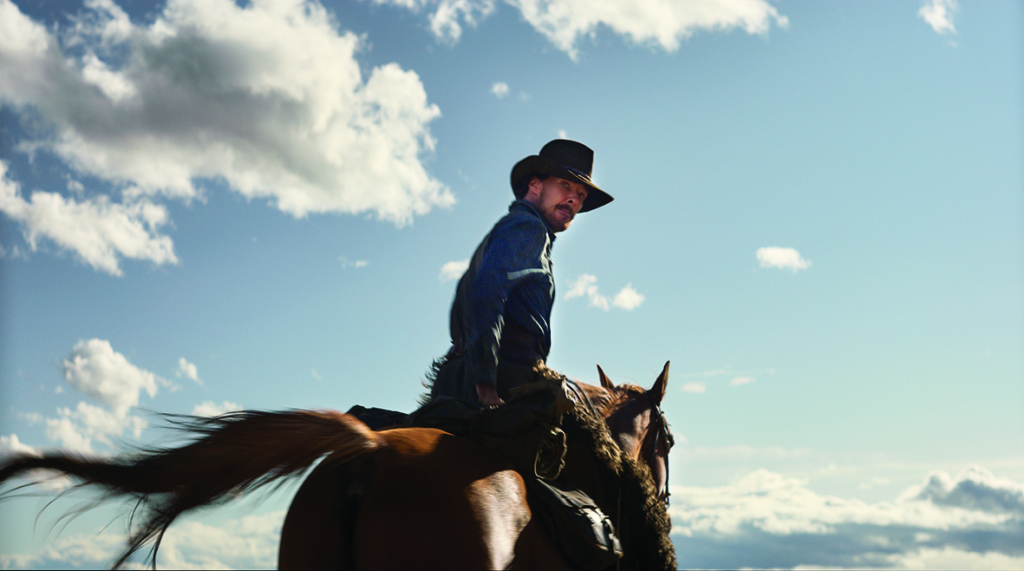
‘Don’t let your mom make a sissy out of you’
Although the quote itself isn’t articulated by Phil until well into the third act, a message pervades the film from its very beginning: ‘Don’t let your mom make a sissy out of you.’ An adaptation of Thomas Savage’s 1967 novel of the same name, The Power of the Dog is set in Montana, 1925, where Phil and his brother, George (Jesse Plemons), manage a lucrative cattle ranch. The siblings have an undeniable closeness, but there seems to be an imbalance of respect as well, with Phil subjecting his counterpart to jibes like ‘fatso’ and ‘chubby’ alongside condescending remarks about his apparent ineptitude. One day, the pair and their gaggle of male cowhands set out to dine at a nearby restaurant run by Peter’s mother, Rose (Kirsten Dunst). There, Phil proceeds to make fun of, then mangle, the paper flowers lovingly prepared by Peter as table ornaments (at the supportive Rose’s request), before ridiculing the teen’s effete manner – much to the cowhands’ amusement. Peter storms out, his mother is distraught and George offers Rose, who is widowed, an olive branch in the form of a marriage proposal.
These early scenes establish Phil as an ‘alpha male’ – the term is used by Campion herself[9]See, for example, Netflix, The Power of the Dog press kit, 2021, p. 4. – in counterpoint to (per this schematisation that has been enshrined as dogma in pick-up-artistry circles, never mind its shaky scientific basis[10]See Jesse Singal, ‘How America Became Infatuated with a Cartoonish Idea of “Alpha Males”’, New York, 18 May 2016, <https://nymag.com/article/2016/05/the-rise-of-the-alpha-beta-male.html>, accessed 4 November 2021.) the kindly ‘beta’ George. Applying this same typology (which has expanded in recent years, somehow, even after the debunking of the popular notion that wolf packs are alpha-led[11]See Dani Di Placido, ‘The Pseudoscience Behind the “Sigma Male”, Explained’, Forbes, 26 January 2021, <https://www.forbes.com/sites/danidiplacido/2021/01/26/the-pseudoscience-behind-the-sigma-male-explained/>, accessed 4 November 2021.), Peter emerges as a ‘sigma’: the maverick male who stands apart from pack thinking and wields his own, internally sustained power. We meet, therefore, three different men, each with a distinct predominant temperament – cruel, caring and fragilely creative – though Phil’s treatment of the other two suggests a need to validate only his version of manhood.
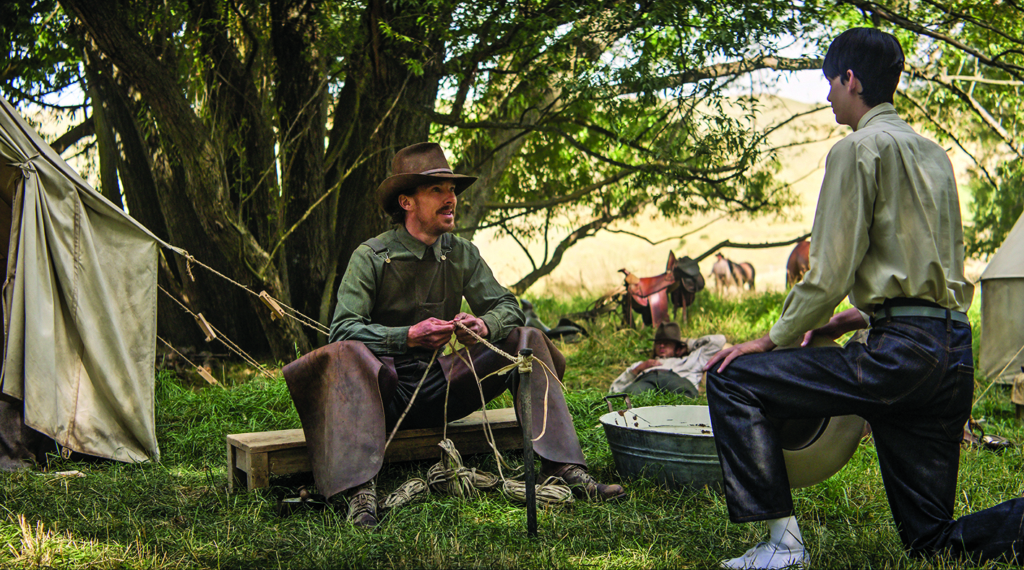
Examining the place of men in Western society, cultural studies academic Jonathan Rutherford argues that masculinity, while ‘attempt[ing] to pass itself off as natural and universal’, is actually a social construction that is ‘in continual struggle to assert its centrality’.[12]Jonathan Rutherford, ‘Who’s That Man?’, in Rowena Chapman & Rutherford (eds), Male Order: Unwrapping Masculinity, Lawrence & Wishart, London, 1988, pp. 22–3. It also lacks a definitive form – notions of masculinity differ depending on context – and cannot truly be arrived at, so it requires instead a ‘masquerade’ of possession and expression.[13]ibid., pp. 52–4; see also Judith Butler, ‘Imitation and Gender Insubordination’, in Henry Abelove, Michèle Aina Barale & David M Halperin (eds), The Lesbian and Gay Studies Reader, Routledge, New York & London, 1993, pp. 311–2. It’s not enough to ‘play male’, however; masculinity must be met with endorsement. ‘Being a man,’ posits masculinity scholar Donald Moss, ‘means being a member of the group of men’[14]Donald Moss, Thirteen Ways of Looking at a Man: Psychoanalysis and Masculinity, Routledge, London & New York, 2012, p. 10. – or, phrased differently, as legendary gender theorist Judith Butler puts it, masculinity is not just performative but a ‘compulsory performance’: ‘acting out of line with heterosexual norms bring with it ostracism, punishment, and violence’.[15]Butler, op. cit., pp. 314–5. Emphasis removed. As a result, just as there are multiple ways that masculinity can manifest, so are there socially enforced hierarchies that elevate certain manifestations of manhood as more ‘right’ than others – what sociologist RW Connell has termed ‘hegemonic masculinity’.[16]See RW Connell & James W Messerschmidt, ‘Hegemonic Masculinity: Rethinking the Concept’, Gender and Society, vol. 19, no. 6, 2005, pp. 830–3.
In the world of 1920s rural Montana, Phil epitomises the idealised male: physically strong, unbothered by the comforts and trappings of civilisation, able to bend the land to his will.
In the world of 1920s rural Montana, Phil epitomises the idealised male: physically strong, unbothered by the comforts and trappings of civilisation, able to bend the land to his will. It’s a model of masculinity rooted in the American frontier myth,[17]See the discussions of the ‘American Adam’ in Heike Paul, The Myths That Made America: An Introduction to American Studies, Transcript, Bielefeld, 2014, pp. 311–21. which in turn is founded on the Abrahamic creation story that ascribes dominion over the Earth to Adam and his descendants.[18]Rutherford, op. cit., pp. 25–6. When, later in the film, Peter returns from medical school to join Rose at the Burbanks’ mansion, Phil’s ‘hazing’ behaviours exhibit hegemonic masculinity in action: he underlines Peter’s status as weakling and interloper, taunts Rose about her ‘female’ emotionality and meekness, and, through both, reinforces his superiority as the man of the house.
But Phil’s is not the only masculinity around. Sometime after mother and son have settled in on the property, they accompany Phil and the cowhands to a satellite camp. As Phil watches on, the ranchers jeer at Peter – wolf-whistling, calling him ‘faggot’ and ‘nancy’ – but the teenager is unfazed, confident in his gauche comportment. And earlier, having been scolded by Rose for dissecting a rabbit in his bedroom as surgical practice, Peter bastardises his opening narration: ‘Where’d a man be if he always did what his mother told him?’ Peter has always been comfortable in his own skin, and this may just win Phil over – or intensify his manly territoriality.
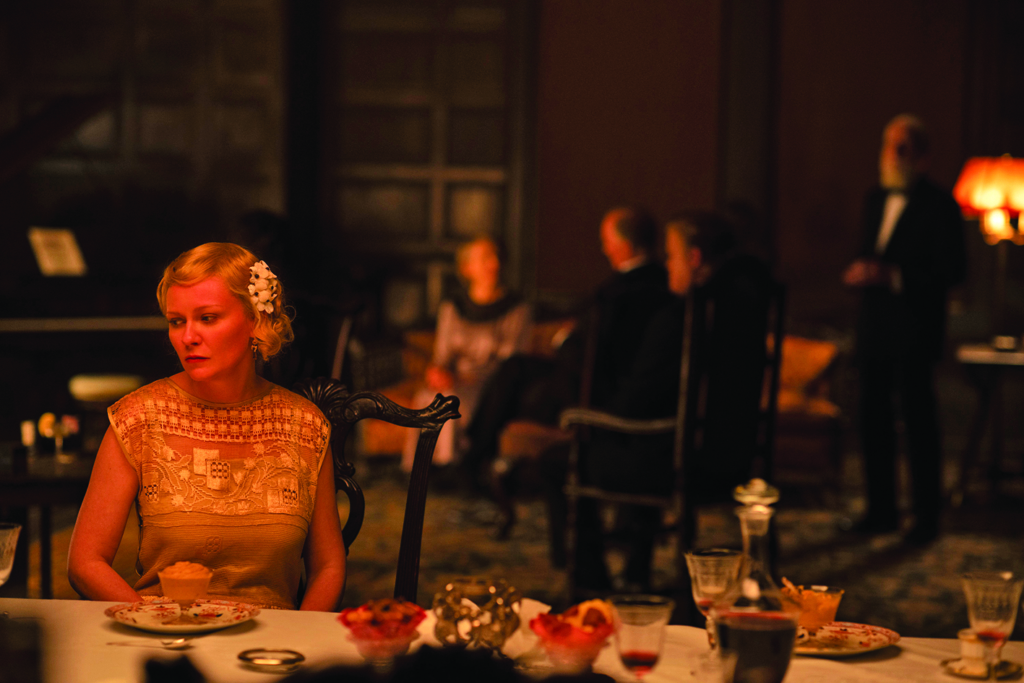
‘Not if you can’t see it, there ain’t’
In one especially memorable scene, the ranchers bathe together in a river. It’s a moment of uninhibited joy and camaraderie, and literalises the American pastoral fantasy of manly bonds and self-sufficiency. Additionally, this spirited sequence of naked male bodies oozes homoeroticism; however, the reverie is swiftly punctured when Phil enters the frame, fully clothed, on horseback, en route to somewhere else. His destination is one we recognise: a clearing surrounded by thick bush with an isolated pool of water, in which we’ve previously seen him bathe. Moments prior to that ablution scene, Phil was in his barn, delicately polishing a saddle to relieve his anger at having heard George and Rose make love through a shared wall. This time, he’s more tranquil; he lies on the ground, takes out a diaphanous handkerchief embroidered with the initials ‘BH’, caresses himself with it and begins to masturbate.
‘BH’ refers to Bronco Henry, that almost deified figure invoked at various points throughout the film. He’s also the owner of the fondled saddle, which is stored in Phil’s private barn next to a plaque engraved with his name, his years of birth and death, and the epitaph ‘friend’. Campion gently depicts the outlines of Phil’s grief – his speech becomes atypically sentimental when discussing Bronco Henry, and he has ritualised routines when handling the deceased’s possessions[19]For more on the role of objects in mourning, see Corina Sas & Alina Coman, ‘Designing Personal Grief Rituals: An Analysis of Symbolic Objects and Actions’, Death Studies, vol. 40, no. 9, 2016, pp. 558, 560–1. – and, later in the film, asked by Peter whether Bronco Henry was his best friend, Phil replies, ‘Yeah, he was. But more than that.’ That Phil is queer is canonically confirmed: by Campion’s assessment, he is ‘in an impossible situation of being […] homophobic and also homosexual’;[20]Campion, quoted in Netflix, op. cit., p. 4. for Cumberbatch, Phil is ‘savage’ because ‘there’s this thing that’s out of his control that the world has denied him’;[21]Benedict Cumberbatch, quoted in Netflix, ibid., p. 6. and various scholars have regarded the source novel’s storyline as a cipher for its author’s own struggles with homosexuality.[22]See, for example, Hosoki, op. cit.; and O Alan Weltzien, ‘Thomas Savage’s Queer Country’, Western Writers Online, February 2015, available at <https://scholarworks.boisestate.edu/cgi/viewcontent.cgi?article=1000&context=wwo>, accessed 4 November 2021. This detail reframes Phil’s intense fixation on Peter as being driven by not just masculine domination but displaced self-loathing and -policing as well. Homophobia, after all, strongly correlates with what researchers James Lock and Brian Kleis call ‘fear of femininity’ and ‘gender-role rigidity’[23]James Lock & Brian Kleis, ‘Origins of Homophobia in Males: Psychosexual Vulnerabilities and Defense Development’, American Journal of Psychotherapy, vol. 52, no. 4, Fall 1998, pp. 425–7. – in other words, hegemonic masculinity – and it’s well established that internalised homophobia swiftly becomes externalised: whiffs of queerness ‘detected’ in others are perceived as threats that could re-‘infect’ the self.[24]See Moss, op. cit., p. 68; and Rutherford, op. cit., p. 60.
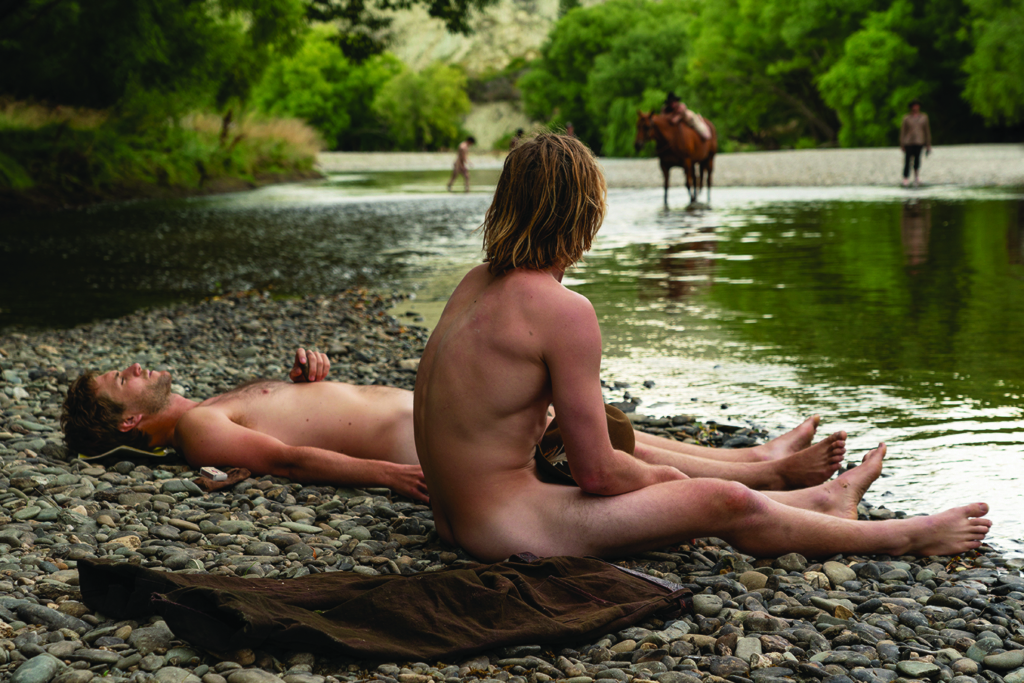
Because he believes his same-sex attraction might render him emasculated, Phil sublimates it instead, fashioning an identity that is the manliest in his clique of manly men. Rarely bathing, refusing gloves when working with his hands, walking with legs splayed as though some force field protects his groin – it’s a contrived, over-the-top performance that cannot be questioned due to the climate of fear he’s cultivated within his peer group. Yet the ‘respect’ he earns through this display of machismo affords him a type of pleasure beyond sex; to appropriate Moss, it ‘simultaneously satisfies homoerotic yearning and protects against it [and] forbids union between men while promising solidarity amongst men’.[25]Moss, op. cit., pp. 81–2. Phil perfects the charade by restricting any vestigial expressions of queerness to two locations: his barn, where he has a quasi altar to Bronco Henry, and his hideaway in the woods, where he’s squirreled away some men’s-health magazines featuring male nudes. Both are enclosed and have a single public entry, safeguarding Phil from normative scrutiny (though washing immediately succeeds any such expression, perhaps as a ceremonial purging of the ‘sinful’ indulgence).
Following the trip to the satellite camp, Phil seemingly undergoes a change of heart; he begins training Peter to ride (using Bronco Henry’s saddle, no less), takes him on errands and even custom-makes a lasso rope for him. We initially hesitate over whether this is genuine reciprocity or a plot to destroy, but it’s clear their newfound bond is set in motion by Phil’s realisation that they share an ability to see what others can’t – from the concealed entrance to his hideaway (which Peter managed to discover, along with the magazines) to the shape of a barking dog in the nearby hills (which, so far, only Phil and Bronco Henry have been able to discern). Intentionally or not, Bronco Henry taught the reticent Phil about desire, which the bereaved rancher is now unable to satisfy. ‘Intense emotional attachment,’ stresses Butler, ‘divides into either wanting to have someone or wanting to be that someone.’[26]Butler, op. cit., p. 316. And so Phil inverts his impulse: he will be Bronco Henry, take a younger man under his wing as his mentor had done, and treat this neophyte to the pleasures of riding and masculine rapture.
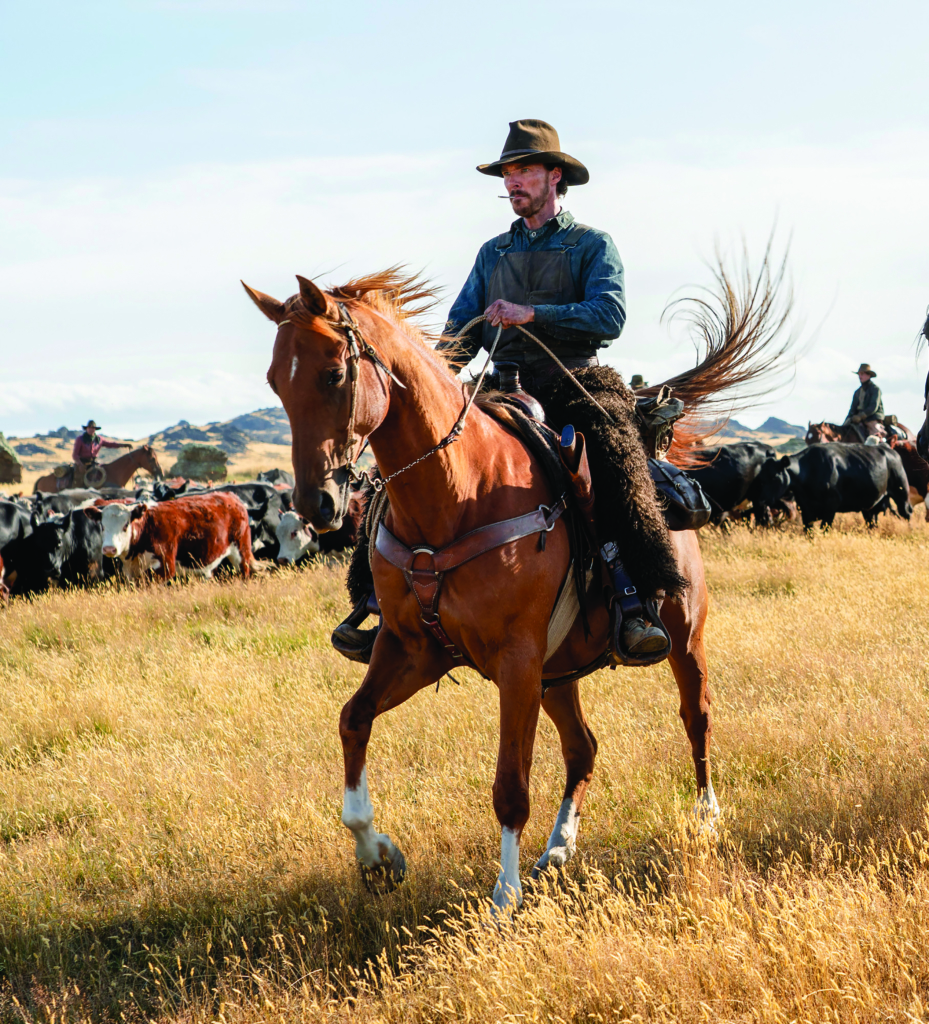
‘Do many of the calves die from wolves?’
While dining at Rose’s restaurant, Phil draws a parallel between his relationship with George and the story of Romulus and Remus; he also toasts ‘the wolf who raised [them]’, Bronco Henry. This statement is but the first of many animal-based references in the film, and forms part of Campion’s cryptographic template for narrative subtext: the dog in the hills (seeing differently), castrated bulls (Freudian castration anxiety), dissected rabbit (instrumentalism), calves killed by wolves (innocence and culpability), horses running free (a deliberately ambiguous, sui generis shot devised by Campion and editor Peter Sciberras to relieve Phil and Peter’s ‘sexual tension’ and ‘slow seduction’[27]Peter Sciberras, quoted in Netflix, op. cit., p. 11.). Beyond these, there is an intertextual significance: film-Phil’s attachment to the dog shape calls to mind novel-Phil’s description of his same-sex attraction as ‘that old loyalty’.[28]Thomas Savage, The Power of the Dog, Little, Brown and Company, Boston, 2001 [1967], p. 263. More expansively, the restaurant speech highlights the centrality of myth and storytelling to the characters’ constructions of self – as in, for instance, the way that metaphorical wolf parentage confers lupine qualities, engendering a simplistic but internally cogent rationale for Phil’s assertion of ‘alpha’ status.
Throughout the film, we gain hints of Phil and George’s affluent, cosmopolitan upbringing: they inherited the ranch from their parents, both went to university, and George tends to don a crisp black tux and impulsively gifts Rose with a baby grand piano.
Other examples entangle the story in complexity. Despite their lifestyle, Phil and his posse are not, in fact, ‘true’ cowboys; with cowboy culture having waned towards the end of the nineteenth century,[29]See ‘Cowboys’, History.com, updated 10 October 2019, <https://www.history.com/topics/westward-expansion/cowboys>, accessed 4 November 2021. they are instead opting in to a cowboy lifestyle. ‘They love cowboys of old and they are […] dressing as cowboys as a kind of quoting,’ explains Campion.[30]Jane Campion, quoted in Anne Thompson, ‘Jane Campion Talks About The Power of the Dog and the Myth of the Sensitive Cowboy’, IndieWire, 6 September 2021, <https://www.indiewire.com/2021/09/western-power-of-the-dog-jane-campion-male-psyche-1234662474/>, accessed 4 November 2021. Indeed, throughout the film, we gain hints of Phil and George’s affluent, cosmopolitan upbringing: they inherited the ranch from their parents, both went to university (Phil studied classics at Yale, explaining his affinity with the Roman foundation myth), and George tends to don a crisp black tux and impulsively gifts Rose with a baby grand piano. Interestingly, The Power of the Dog’s time period coincides with a lesser known (albeit short-lived) moment of queer celebration in American urban centres: coinciding with the expansion of the jazz age, gay enclaves formed in the nightlife districts of places such as New York City, Chicago and Pittsburgh. While, in official daytime contexts, broader society still shunned anything non-heteronormative, there was a hunger for the so-called ‘pansy craze’ as a source of entertainment and respite from ‘polite’ society.[31]See Sarah Pruitt, ‘How Gay Culture Blossomed During the Roaring Twenties’, History.com, updated 12 June 2019, <https://www.history.com/news/gay-culture-roaring-twenties-prohibition>; and Natalie Zarrelli, ‘In the Early 20th Century, America Was Awash in Incredible Queer Nightlife’, Atlas Obscura, 14 April 2016, <https://www.atlasobscura.com/articles/in-the-early-20th-century-america-was-awash-in-incredible-queer-nightlife>, both accessed 4 November 2021. The existence of such milieus offers possible supplementary insight into the solace found by people like Phil in the US farming regions’ more traditional pastures.
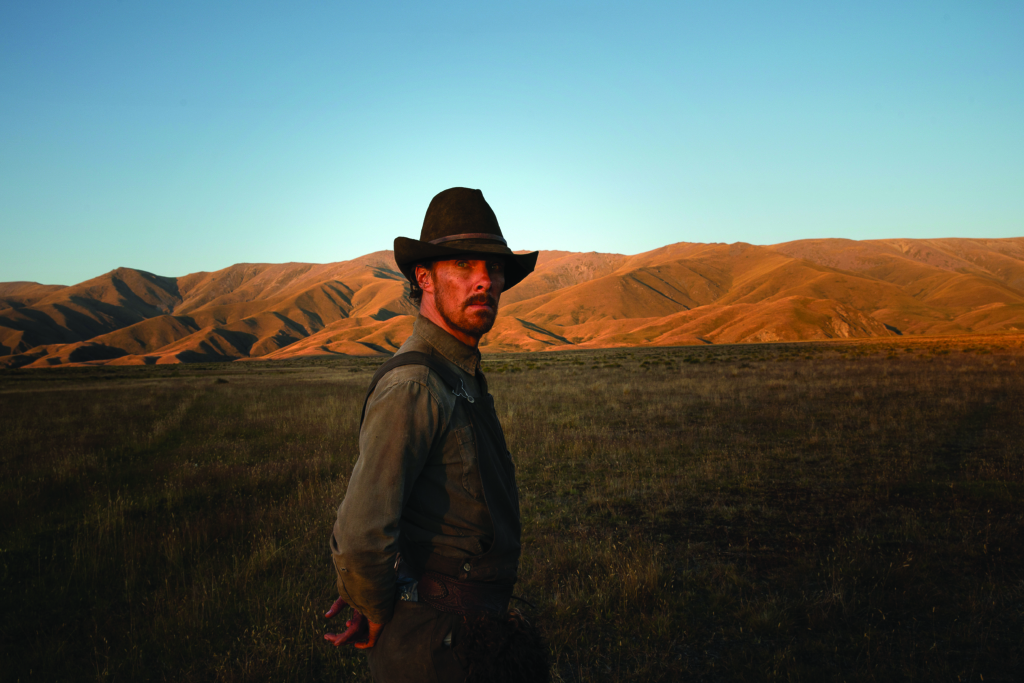
Phil’s complicated emplotment[32]‘Emplotment’ is philosopher Paul Ricœur’s term for humans’ weaving together of memories and external stories/myths to form a ‘self-narrative’ that defines our identities; see Ricœur, Time and Narrative, vol. 1, trans. Kathleen McLaughlin & David Pellauer, The University of Chicago Press, Chicago, 1984. matches the intricacy of Peter’s own confabulation. As foreshadowed by the film’s preamble, Peter positions himself as saviour and conceives of his and Rose’s situation as one of entrapment; built into these are a reductive characterisation of Phil as some kind of malevolent enemy, notwithstanding Rose’s assurances that ‘he’s just a man […] only another man’, and the idea that violence is the only ‘way out’. By the film’s denouement, the previously implied allegiance to Peter is consummated and Phil dies as a victim of hubris – the young man has exploited his elder’s eschewal of gloves and enacted a plan to infect[33]This plot point is loaded with venomous associations: toxic masculinity, homosexuality as ‘disease’, etc. him with bovine-spread anthrax. As The Power of the Dog comes to a close, our young murderer reads the biblical funeral rite that gives the film its title: ‘Deliver my soul from the sword; my darling from the power of the dog.’ For Campion, the passage is simply about passion and vicious strength;[34]See Netflix, op. cit., p. 4. read in its full context, however, the psalm prophesies the Son of God being ‘surrounded’ by ‘evil men’, who are equated to wild dogs.[35]See the various translations of Psalm 22, available at Bible Hub, <https://biblehub.com/psalms/22.htm>, accessed 4 November 2021. Peter’s choice of rite betrays his Messiah complex and retroactively foretells his defeat of the villainous dog/wolf Phil. That he shares his name with the apostle whom Jesus Christ chose as leader following his death is also, perhaps, a detail he has internalised.
Campion’s previous films have focused on women’s subjectivity and sexuality as well as their subjugation in a patriarchal world,[36]See Anthony Carew, ‘Jane Campion’, Screen Education, no. 89, 2018, pp. 67, 75–6. and the director herself has acknowledged that her latest, with its focus on men and masculinity, is a ‘departure’.[37]Campion, quoted in Hosoki, op. cit. But The Power of the Dog arguably builds on her oeuvre to date, sidelining Rose to redirect its sterile light onto three distinct incarnations of masculinity that each nonetheless contribute to a world hostile to women. The film’s final act largely boils down to a battle between the repressed queer man crusading for old-world masculinity and the possibly queer man embodying a ‘new-age’ masculinity, yet neither explicitly considers the repercussions on Rose, who, caught in the crossfire, is driven to alcohol-induced delirium (and, within Peter’s purview, never once given the chance to articulate her preferred method of ‘help’). For his part, George’s kindness at once borders on overbearing, as when he gushes about Rose’s piano-playing during a social event in spite of her protests, and is plagued by wilful blindness, as when he refuses to intervene when Rose shares her concerns about Phil and Peter’s relationship. Plotted on a matrix of gender and power, what truly separates Peter’s paternalistic rescue, Phil’s psychic warfare and George’s smothering? Are any of these men, asks the film, of the kind we would call ‘good’?
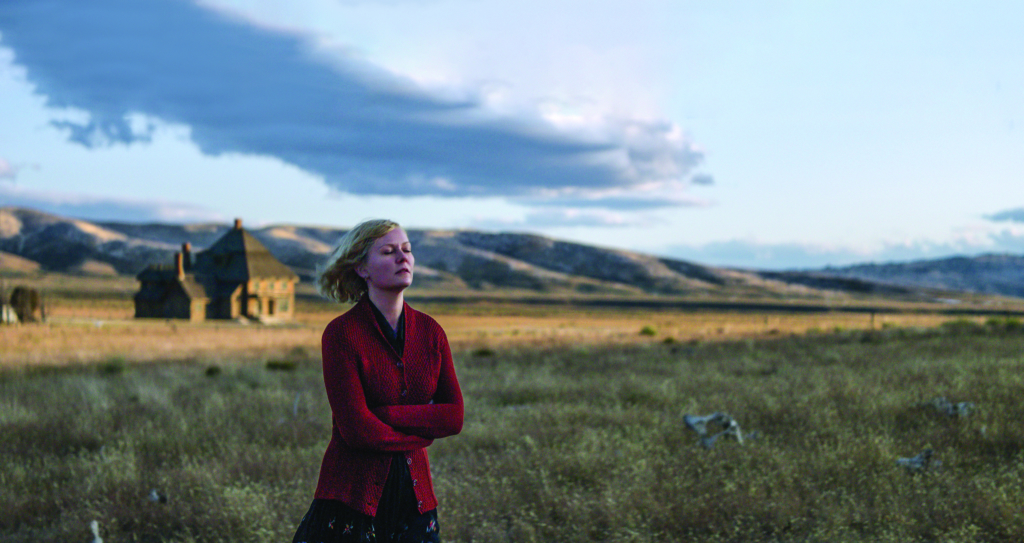
The Power of the Dog concludes with Peter on his bed; he is wearing gloves (in direct rebuff of Phil’s refusal of them) and caressing the rope his victim made for him, recalling the gentleness with which Phil handled Bronco Henry’s handkerchief and saddle. Having proven himself a ‘real’ man, but not invulnerable to grief and guilt, Peter now has a ritual of his own, and a secret. He hides the rope that forever ties him to Phil under his bed and looks on as, beyond the window, George and Rose kiss – the sanctity of heterosexuality preserved.
Endnotes
| 1 | The Silver Lion is the prize given for Best Director at the Venice International Film Festival, where The Power of the Dog premiered in September 2021. |
|---|---|
| 2 | Bilge Ebiri, ‘Jane Campion Makes a Triumphant Return to the Big Screen with The Power of the Dog’, Vulture, 2 September 2021, <https://www.vulture.com/article/movie-review-netflixs-power-of-the-dog-from-jane-campion.html>, accessed 4 November 2021. |
| 3 | Mae Abdulbaki, ‘Middleburg Review: Jane Campion’s The Power of the Dog Is a Riveting Must-watch’, Screen Rant, 19 October 2021, <https://screenrant.com/the-power-of-the-dog-2021-movie-reviews/>, accessed 4 November 2021. |
| 4 | Chris Barsanti, ‘Review: The Power of the Dog Is a Quietly Ferocious Portrait of Weaponized Masculinity’, Slant, 21 September 2021, <https://www.slantmagazine.com/film/the-power-of-the-dog-review-jane-campion/>, accessed 4 November 2021. |
| 5 | Owen Gleiberman, ‘The Power of the Dog Review: Jane Campion’s Psychodramatic Western Is Impeccably Crafted but Lacks the Major Voices of The Piano’, Variety, 2 September 2021, <https://variety.com/2021/film/reviews/the-power-of-the-dog-review-jane-campion-benedict-cumberbatch-kirsten-dunst-jesse-plemons-1235054229/>, accessed 4 November 2021. |
| 6 | Tom Bond, ‘The Power of the Dog – Venice 2021 Review’, One Room with a View, 2 September 2021, <https://oneroomwithaview.com/2021/09/02/the-power-of-the-dog-venice-2021-review/>, accessed 4 November 2021. |
| 7 | The film’s deliberately slow pacing is a quality that many critics have identified as a source of its potency; see, for example, Abdulbaki, op. cit.; and Anna Swanson, ‘TIFF 2021: The Power of the Dog Is a Deeply Rewarding Slow Burn’, Film School Rejects, 12 September 2021, <https://filmschoolrejects.com/the-power-of-the-dog-review/>, accessed 4 November 2021. |
| 8 | Jane Campion, quoted in Nobuhiro Hosoki, ‘New York Film Festival: The Power of the Dog / Press Conference with Director Jane Campion, Actors Benedict Cumberbatch, Kirsten Dunst, Kodi Smit-McPhee, and the Cinematographer Ari Wegner’, Cinema Daily US, 16 October 2021, <https://cinemadailyus.com/interviews/new-york-film-festival-the-power-of-the-dog-press-conference-with-director-jane-campion-actors-benedict-cumberbatch-kirsten-dunst-kodi-smit-mcphee-and-the-cinematographer-ari-wegner/>, accessed 4 November 2021. |
| 9 | See, for example, Netflix, The Power of the Dog press kit, 2021, p. 4. |
| 10 | See Jesse Singal, ‘How America Became Infatuated with a Cartoonish Idea of “Alpha Males”’, New York, 18 May 2016, <https://nymag.com/article/2016/05/the-rise-of-the-alpha-beta-male.html>, accessed 4 November 2021. |
| 11 | See Dani Di Placido, ‘The Pseudoscience Behind the “Sigma Male”, Explained’, Forbes, 26 January 2021, <https://www.forbes.com/sites/danidiplacido/2021/01/26/the-pseudoscience-behind-the-sigma-male-explained/>, accessed 4 November 2021. |
| 12 | Jonathan Rutherford, ‘Who’s That Man?’, in Rowena Chapman & Rutherford (eds), Male Order: Unwrapping Masculinity, Lawrence & Wishart, London, 1988, pp. 22–3. |
| 13 | ibid., pp. 52–4; see also Judith Butler, ‘Imitation and Gender Insubordination’, in Henry Abelove, Michèle Aina Barale & David M Halperin (eds), The Lesbian and Gay Studies Reader, Routledge, New York & London, 1993, pp. 311–2. |
| 14 | Donald Moss, Thirteen Ways of Looking at a Man: Psychoanalysis and Masculinity, Routledge, London & New York, 2012, p. 10. |
| 15 | Butler, op. cit., pp. 314–5. Emphasis removed. |
| 16 | See RW Connell & James W Messerschmidt, ‘Hegemonic Masculinity: Rethinking the Concept’, Gender and Society, vol. 19, no. 6, 2005, pp. 830–3. |
| 17 | See the discussions of the ‘American Adam’ in Heike Paul, The Myths That Made America: An Introduction to American Studies, Transcript, Bielefeld, 2014, pp. 311–21. |
| 18 | Rutherford, op. cit., pp. 25–6. |
| 19 | For more on the role of objects in mourning, see Corina Sas & Alina Coman, ‘Designing Personal Grief Rituals: An Analysis of Symbolic Objects and Actions’, Death Studies, vol. 40, no. 9, 2016, pp. 558, 560–1. |
| 20 | Campion, quoted in Netflix, op. cit., p. 4. |
| 21 | Benedict Cumberbatch, quoted in Netflix, ibid., p. 6. |
| 22 | See, for example, Hosoki, op. cit.; and O Alan Weltzien, ‘Thomas Savage’s Queer Country’, Western Writers Online, February 2015, available at <https://scholarworks.boisestate.edu/cgi/viewcontent.cgi?article=1000&context=wwo>, accessed 4 November 2021. |
| 23 | James Lock & Brian Kleis, ‘Origins of Homophobia in Males: Psychosexual Vulnerabilities and Defense Development’, American Journal of Psychotherapy, vol. 52, no. 4, Fall 1998, pp. 425–7. |
| 24 | See Moss, op. cit., p. 68; and Rutherford, op. cit., p. 60. |
| 25 | Moss, op. cit., pp. 81–2. |
| 26 | Butler, op. cit., p. 316. |
| 27 | Peter Sciberras, quoted in Netflix, op. cit., p. 11. |
| 28 | Thomas Savage, The Power of the Dog, Little, Brown and Company, Boston, 2001 [1967], p. 263. |
| 29 | See ‘Cowboys’, History.com, updated 10 October 2019, <https://www.history.com/topics/westward-expansion/cowboys>, accessed 4 November 2021. |
| 30 | Jane Campion, quoted in Anne Thompson, ‘Jane Campion Talks About The Power of the Dog and the Myth of the Sensitive Cowboy’, IndieWire, 6 September 2021, <https://www.indiewire.com/2021/09/western-power-of-the-dog-jane-campion-male-psyche-1234662474/>, accessed 4 November 2021. |
| 31 | See Sarah Pruitt, ‘How Gay Culture Blossomed During the Roaring Twenties’, History.com, updated 12 June 2019, <https://www.history.com/news/gay-culture-roaring-twenties-prohibition>; and Natalie Zarrelli, ‘In the Early 20th Century, America Was Awash in Incredible Queer Nightlife’, Atlas Obscura, 14 April 2016, <https://www.atlasobscura.com/articles/in-the-early-20th-century-america-was-awash-in-incredible-queer-nightlife>, both accessed 4 November 2021. |
| 32 | ‘Emplotment’ is philosopher Paul Ricœur’s term for humans’ weaving together of memories and external stories/myths to form a ‘self-narrative’ that defines our identities; see Ricœur, Time and Narrative, vol. 1, trans. Kathleen McLaughlin & David Pellauer, The University of Chicago Press, Chicago, 1984. |
| 33 | This plot point is loaded with venomous associations: toxic masculinity, homosexuality as ‘disease’, etc. |
| 34 | See Netflix, op. cit., p. 4. |
| 35 | See the various translations of Psalm 22, available at Bible Hub, <https://biblehub.com/psalms/22.htm>, accessed 4 November 2021. |
| 36 | See Anthony Carew, ‘Jane Campion’, Screen Education, no. 89, 2018, pp. 67, 75–6. |
| 37 | Campion, quoted in Hosoki, op. cit. |
